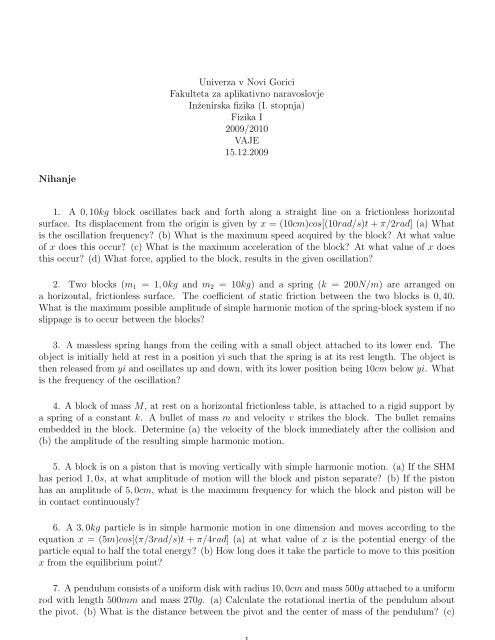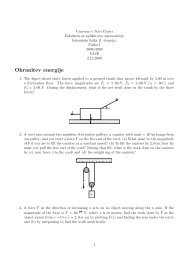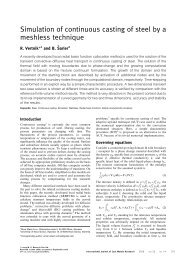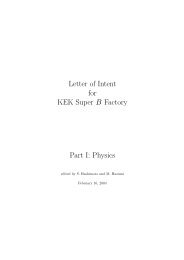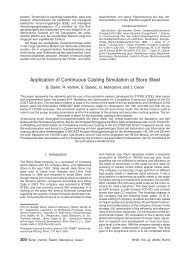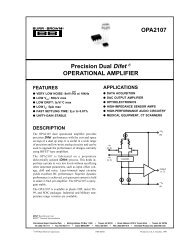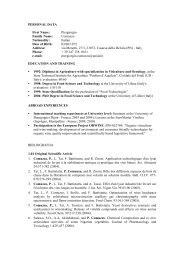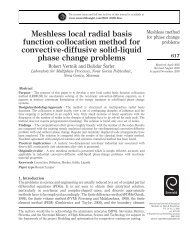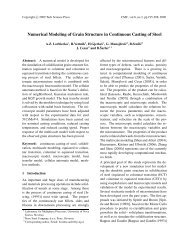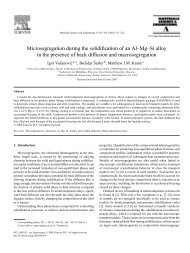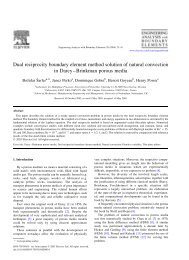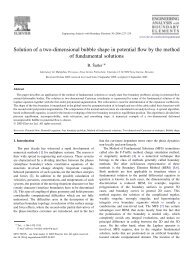Fizika I 2009/2010 VAJE 15.12.2009 N - Univerza v Novi Gorici
Fizika I 2009/2010 VAJE 15.12.2009 N - Univerza v Novi Gorici
Fizika I 2009/2010 VAJE 15.12.2009 N - Univerza v Novi Gorici
You also want an ePaper? Increase the reach of your titles
YUMPU automatically turns print PDFs into web optimized ePapers that Google loves.
Nihanje<br />
<strong>Univerza</strong> v <strong>Novi</strong> <strong>Gorici</strong><br />
Fakulteta za aplikativno naravoslovje<br />
Inˇzenirska fizika (I. stopnja)<br />
<strong>Fizika</strong> I<br />
<strong>2009</strong>/<strong>2010</strong><br />
<strong>VAJE</strong><br />
15.12.<strong>2009</strong><br />
1. A 0, 10kg block oscillates back and forth along a straight line on a frictionless horizontal<br />
surface. Its displacement from the origin is given by x = (10cm)cos[(10rad/s)t + π/2rad] (a) What<br />
is the oscillation frequency? (b) What is the maximum speed acquired by the block? At what value<br />
of x does this occur? (c) What is the maximum acceleration of the block? At what value of x does<br />
this occur? (d) What force, applied to the block, results in the given oscillation?<br />
2. Two blocks (m1 = 1, 0kg and m2 = 10kg) and a spring (k = 200N/m) are arranged on<br />
a horizontal, frictionless surface. The coefficient of static friction between the two blocks is 0, 40.<br />
What is the maximum possible amplitude of simple harmonic motion of the spring-block system if no<br />
slippage is to occur between the blocks?<br />
3. A massless spring hangs from the ceiling with a small object attached to its lower end. The<br />
object is initially held at rest in a position yi such that the spring is at its rest length. The object is<br />
then released from yi and oscillates up and down, with its lower position being 10cm below yi. What<br />
is the frequency of the oscillation?<br />
4. A block of mass M, at rest on a horizontal frictionless table, is attached to a rigid support by<br />
a spring of a constant k. A bullet of mass m and velocity v strikes the block. The bullet remains<br />
embedded in the block. Determine (a) the velocity of the block immediately after the collision and<br />
(b) the amplitude of the resulting simple harmonic motion.<br />
5. A block is on a piston that is moving vertically with simple harmonic motion. (a) If the SHM<br />
has period 1, 0s, at what amplitude of motion will the block and piston separate? (b) If the piston<br />
has an amplitude of 5, 0cm, what is the maximum frequency for which the block and piston will be<br />
in contact continuously?<br />
6. A 3, 0kg particle is in simple harmonic motion in one dimension and moves according to the<br />
equation x = (5m)cos[(π/3rad/s)t + π/4rad] (a) at what value of x is the potential energy of the<br />
particle equal to half the total energy? (b) How long does it take the particle to move to this position<br />
x from the equilibrium point?<br />
7. A pendulum consists of a uniform disk with radius 10, 0cm and mass 500g attached to a uniform<br />
rod with length 500mm and mass 270g. (a) Calculate the rotational inertia of the pendulum about<br />
the pivot. (b) What is the distance between the pivot and the center of mass of the pendulum? (c)
Calculate the period of oscillation.


